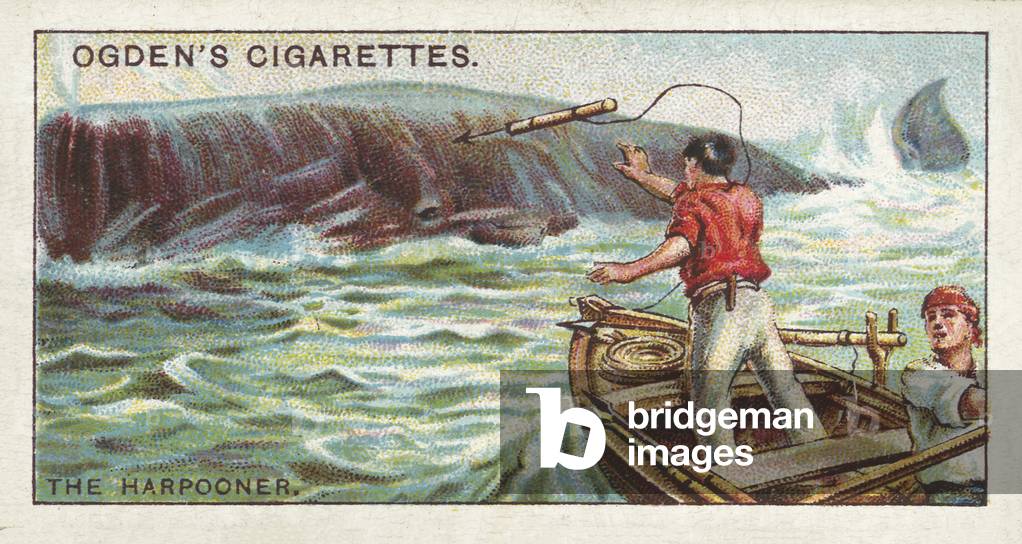The harpooner, a specialized role in maritime history, is integral to understanding how ancient and modern societies have interacted with the ocean. Traditionally associated with whaling and fishing, the harpooner is a figure whose skills and tools have evolved significantly over time. This article delves into the harpooner’s role, the history of harpooning, and the significance of this profession in various maritime cultures.
What is a Harpooner?
A harpooner is a person skilled in using a harpoon, a long spear-like weapon designed for hunting large marine animals. This role is most commonly associated with whaling, where the harpooner’s task was to strike and secure whales. However, harpooners have also played a crucial role in other maritime industries, such as fishing and sealing.
1. Traditional Role: Historically, the harpooner’s primary responsibility was to launch the harpoon with precision to strike a large sea creature. The role required considerable physical strength, agility, and a deep understanding of marine behavior. The harpooner worked in tandem with other crew members to ensure the successful capture and processing of the quarry.
2. Modern Context: In contemporary times, the role of the harpooner has diminished with the advent of advanced fishing technologies and conservation efforts. However, harpooners are still active in some commercial fishing operations and are also featured in historical reenactments and traditional whaling communities.
The Evolution of Harpooning
Harpooning has a rich history that reflects the technological and cultural advancements of maritime societies. Here’s an overview of the evolution of harpooning techniques and equipment:
1. Ancient Harpoons: Early harpoons were made from materials such as bone, wood, and stone. Indigenous peoples around the world, including those in the Arctic and Pacific regions, developed various types of harpoons tailored to their specific needs. These early harpoons were often simple, hand-crafted tools used for subsistence hunting.
2. The Whaling Era: The 17th and 18th centuries saw significant advancements in harpoon technology, particularly with the rise of commercial whaling. Harpoons during this period were typically made from iron and featured more sophisticated designs, including barbs to ensure a secure hold on the whale. The harpooner’s role became increasingly professionalized, with dedicated ships and crews specializing in whaling.
3. The Modern Era: The 20th century brought further technological advancements, including the development of explosive harpoons and mechanized whaling equipment. Despite these innovations, the fundamental principles of harpooning remained largely the same. However, as environmental awareness and conservation efforts grew, the practice of commercial whaling declined, leading to a decrease in the demand for harpooners.
The Harpooner’s Skills and Techniques
The role of a harpooner requires a combination of technical skills and knowledge of marine life:
1. Precision and Accuracy: The ability to accurately aim and launch the harpoon is crucial. Harpooners must consider factors such as the movement of the target, sea conditions, and wind direction. Precision is essential to ensure a successful strike and secure the quarry.
2. Physical Strength and Stamina: Harpooning often requires significant physical exertion. Harpooners must handle heavy equipment and manage the strenuous demands of working in rough sea conditions. Strength and endurance are vital for both the act of throwing the harpoon and dealing with the captured animal.
3. Knowledge of Marine Life: A harpooner must have a deep understanding of the behavior and anatomy of marine animals. This knowledge helps in anticipating the movements of the target and choosing the best approach for a successful strike.
4. Coordination and Teamwork: Harpooning is rarely a solo endeavor. The harpooner works closely with other crew members, including lookouts, navigators, and ship hands. Effective communication and teamwork are essential for the successful capture and processing of the catch.
The Significance of Harpooners in Maritime Cultures
Harpooners have played a vital role in various maritime cultures, contributing to both subsistence and commercial practices. Their work has had significant economic, cultural, and ecological impacts:
1. Economic Impact: Historically, harpooning was a key component of the whaling industry, which provided valuable resources such as whale oil and baleen. The economic importance of harpooning influenced the development of maritime trade and industry, particularly in whaling communities.
2. Cultural Significance: In many cultures, harpooners are celebrated as skilled and courageous individuals. Their role in traditional hunting practices has shaped cultural narratives and customs. For example, in Inuit and Polynesian cultures, harpooners are often revered for their expertise and bravery.
3. Conservation and Ethical Considerations: The decline of commercial whaling has led to increased focus on conservation and ethical practices. Modern harpooners must navigate complex regulations and environmental considerations. The shift towards sustainable practices reflects broader changes in attitudes towards marine life and conservation.
Conclusion
The role of the harpooner is a fascinating aspect of maritime history that highlights the intersection of skill, technology, and culture. From ancient harpoons crafted from bone to modern innovations in whaling technology, the harpooner’s profession has evolved significantly over time. While the demand for traditional harpooners has diminished, their legacy remains an important part of maritime heritage.
Understanding the harpooner’s role provides valuable insights into the historical and cultural significance of harpooning, as well as the ongoing challenges and opportunities in marine resource management. As we continue to navigate the complexities of maritime conservation and sustainable practices, the lessons learned from the harpooner’s history offer important guidance for the future.
